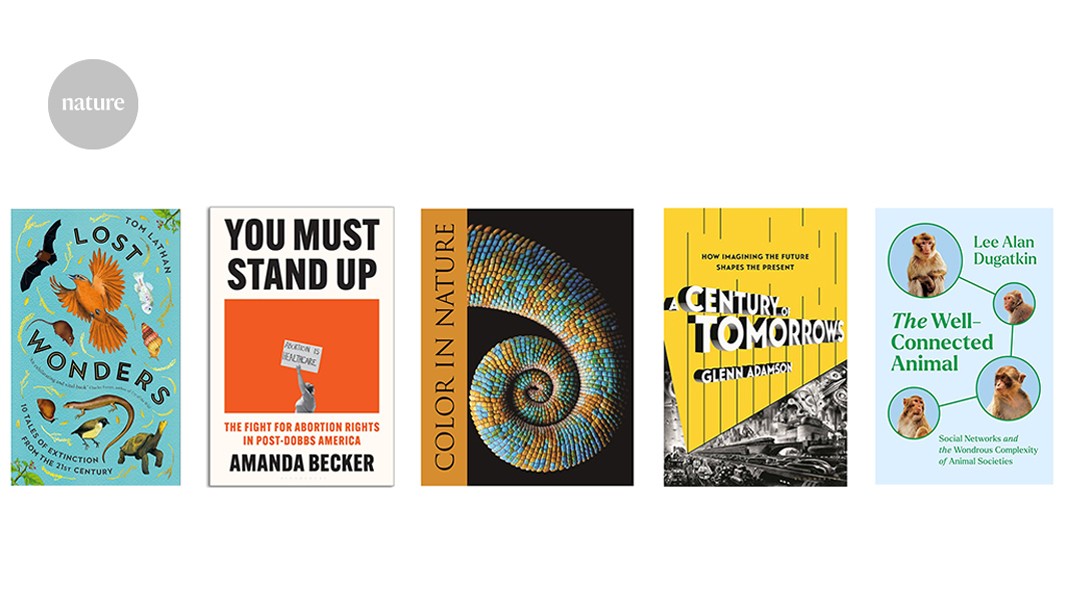Audience Analysis and User-Centered Approach in Technical Writing
The success of a technical document often hinges on how well it resonates with its intended audience. Audience analysis and the user-centered approach embody this principle. It is used to craft documents that are not only informative but also tailored to the needs, expectations, and abilities of their target readers. In the next section, Let’s explore audience analysis in technical writing. Audience Analysis in Technical Writing Audience analysis is the foundation of effective technical writing. It involves gathering and interpreting information about the audience for a particular document to understand their characteristics, preferences, expectations, and needs. Without a comprehensive understanding of the audience, technical writers risk creating either too simplistic or too complex content, failing to achieve the desired level of clarity and usefulness. In the following sections, let’s look at some reasons why you shouldn’t skip audience analysis when crafting technical content. Why You Shouldn’t Skip Audience Analysis in Technical Writing Tailoring Content to the Audience One of the most compelling reasons for conducting audience analysis is to tailor the content to the audience's knowledge and expertise level. In technical writing, readers can range from novices to experts in the subject matter. Failing to consider this variation can either patronize or alienate the audience. For example, imagine a user manual for a new smartphone. Suppose the writer assumes all users are tech-savvy and familiar with advanced smartphone features. In that case, the manual may skip over crucial explanations and troubleshooting steps, frustrating and confusing less experienced users. Conversely, if the manual overexplains every essential feature, it may bore and frustrate tech-savvy users. By conducting audience analysis, the technical writer can identify the spectrum of expertise within the audience and strike a balance in the content, offering straightforward explanations for beginners and advanced tips for experts. Addressing Audience Needs and Expectations Understanding the specific needs and expectations of the readers shouldn’t be overlooked when creating technical content. Different audiences may have various reasons for reading a technical document. Some might seek detailed technical specifications, while others may look for step-by-step instructions on using a product. By identifying these needs and expectations, technical writers can structure their documents to address them directly. For instance, professional designers and hobbyists might use a software manual for a graphic design application. By conducting audience analysis, the writer can determine that professionals may require in-depth tutorials on advanced features. At the same time, hobbyists might need more user-friendly explanations and guidance on the basics. Adapting Tone and Style The tone and style of a technical document play a pivotal role in engaging the audience. Audience analysis helps technical writers choose the appropriate tone, language, and style that resonates with the readers. For instance, a document intended for a highly technical and specialized audience may use industry-specific jargon and a formal tone. In contrast, a document targeting a general audience would employ plain language and a more conversational tone. Now that you understand why audience analysis is essential in technical writing let’s see how to do it in the next section. How to Conduct Audience Analysis in Technical Writing Identify the Target Audience Begin by identifying the document's intended readers. This may include demographic information such as education level, job title, and industry. Understanding the demographics helps in creating a preliminary profile of the audience. Determine the Audience's Prior Knowledge Assess the audience's prior knowledge and expertise in the subject matter. This step is crucial in determining whether the document should be introductory, intermediate, or advanced in its approach. It can involve surveys, interviews, or analyzing existing data about the audience's background. Identify the Audience's Needs and Goals Find out what the audience hopes to achieve by reading the document. Are they seeking information, instructions, troubleshooting guidance, or something else? Understanding their needs and goals helps in aligning the content with their expectations. Consider Audience Attitudes and Values Evaluate the audience's attitudes, values, and beliefs that might impact their reception of the content. For example, if the audience has a strong security consciousness, a technical document related to a product should highlight its cybersecurity features. Analyze Audience Reading Preferences Determine how the audience prefers to consume information. Some readers may prefer printed documents,

The success of a technical document often hinges on how well it resonates with its intended audience. Audience analysis and the user-centered approach embody this principle.
It is used to craft documents that are not only informative but also tailored to the needs, expectations, and abilities of their target readers.
In the next section, Let’s explore audience analysis in technical writing.
Audience Analysis in Technical Writing
Audience analysis is the foundation of effective technical writing. It involves gathering and interpreting information about the audience for a particular document to understand their characteristics, preferences, expectations, and needs.
Without a comprehensive understanding of the audience, technical writers risk creating either too simplistic or too complex content, failing to achieve the desired level of clarity and usefulness.
In the following sections, let’s look at some reasons why you shouldn’t skip audience analysis when crafting technical content.
Why You Shouldn’t Skip Audience Analysis in Technical Writing
Tailoring Content to the Audience
One of the most compelling reasons for conducting audience analysis is to tailor the content to the audience's knowledge and expertise level. In technical writing, readers can range from novices to experts in the subject matter. Failing to consider this variation can either patronize or alienate the audience.
For example, imagine a user manual for a new smartphone. Suppose the writer assumes all users are tech-savvy and familiar with advanced smartphone features. In that case, the manual may skip over crucial explanations and troubleshooting steps, frustrating and confusing less experienced users. Conversely, if the manual overexplains every essential feature, it may bore and frustrate tech-savvy users.
By conducting audience analysis, the technical writer can identify the spectrum of expertise within the audience and strike a balance in the content, offering straightforward explanations for beginners and advanced tips for experts.
Addressing Audience Needs and Expectations
Understanding the specific needs and expectations of the readers shouldn’t be overlooked when creating technical content.
Different audiences may have various reasons for reading a technical document. Some might seek detailed technical specifications, while others may look for step-by-step instructions on using a product. By identifying these needs and expectations, technical writers can structure their documents to address them directly.
For instance, professional designers and hobbyists might use a software manual for a graphic design application. By conducting audience analysis, the writer can determine that professionals may require in-depth tutorials on advanced features. At the same time, hobbyists might need more user-friendly explanations and guidance on the basics.
Adapting Tone and Style
The tone and style of a technical document play a pivotal role in engaging the audience. Audience analysis helps technical writers choose the appropriate tone, language, and style that resonates with the readers.
For instance, a document intended for a highly technical and specialized audience may use industry-specific jargon and a formal tone.
In contrast, a document targeting a general audience would employ plain language and a more conversational tone.
Now that you understand why audience analysis is essential in technical writing let’s see how to do it in the next section.
How to Conduct Audience Analysis in Technical Writing
Identify the Target Audience
Begin by identifying the document's intended readers. This may include demographic information such as education level, job title, and industry.
Understanding the demographics helps in creating a preliminary profile of the audience.
Determine the Audience's Prior Knowledge
Assess the audience's prior knowledge and expertise in the subject matter.
This step is crucial in determining whether the document should be introductory, intermediate, or advanced in its approach. It can involve surveys, interviews, or analyzing existing data about the audience's background.
Identify the Audience's Needs and Goals
Find out what the audience hopes to achieve by reading the document. Are they seeking information, instructions, troubleshooting guidance, or something else?
Understanding their needs and goals helps in aligning the content with their expectations.
Consider Audience Attitudes and Values
Evaluate the audience's attitudes, values, and beliefs that might impact their reception of the content.
For example, if the audience has a strong security consciousness, a technical document related to a product should highlight its cybersecurity features.
Analyze Audience Reading Preferences
Determine how the audience prefers to consume information. Some readers may prefer printed documents, while others might prefer digital formats.
Additionally, consider whether the audience prefers concise information or appreciates detailed explanations.
Create Audience Personas
To make the audience analysis more tangible, create audience personas. These fictional but representative characters embody the key characteristics and needs of the audience segments you've identified.
Personas provide a precise reference point for tailoring content.
Now that you know audience analysis, why it’s essential, and how to conduct it in technical writing, the next section will explore the user-centered approach to technical writing.
User-Centered Approach in Technical Writing
The user-centered approach extends audience analysis and prioritizes the audience's needs and preferences during the document creation.
It's a philosophy acknowledging that the document is not just a piece of information but a tool designed to serve the reader. How do you use it, though?
How to use User-Centered Approach in Technical Writing
Prioritizing Clarity and Accessibility
User-centered technical writing emphasizes clarity and accessibility. This means using clear and concise language, avoiding unnecessary jargon, and providing explanations when technical terms are necessary.
The goal is to ensure that all readers can understand the content regardless of their prior knowledge.
Structuring Information Effectively
Another attribute of the user-centered approach is its incorporation of a logical and user-friendly structure. Technical documents should be organized to align with how the audience thinks and seeks information.
This often involves using headings, subheadings, bullet points, and numbered lists to break down complex information into digestible chunks.
Providing Context and Examples
User-centered technical writing provides information, context, and examples to help readers apply the information.
Real-world scenarios, case studies, and practical examples can make the content more relatable and actionable.
Offering Multiple Access Points
By recognizing that different readers have different needs, user-centered technical documents often provide multiple access points to information. This can include a table of contents, an index, a glossary, and cross-references to related sections.
These features empower readers to navigate the document efficiently.
Usability Testing
A crucial aspect of the user-centered approach is usability testing. This involves having members of the target audience review and interact with the document to identify any usability issues, confusion points, or areas where improvements can be made.
Usability testing provides valuable feedback for refining the document.
Iterative Improvement
The user-centered approach acknowledges that technical writing is an iterative process. Feedback from users is used to refine and improve the document continuously.
This ongoing improvement ensures that the document remains aligned with the audience's evolving needs.
In the next section, let’s look at some of the benefits of a user-centered approach.
Benefits of User-Centered Approach in Technical Writing
As you’ve learned above, the user-centered approach is a key concept in technical writing, but what are the benefits? Let’s explore some of them in the following sections.
Enhanced User Satisfaction
When technical documents are designed with the user in mind, readers are more likely to find them helpful and easy to understand.
This, in turn, leads to increased user satisfaction and a positive perception of the product or service being described.
Reduced Support and Training Costs
Well-crafted, user-centered documents can significantly reduce the need for customer support and training.
When users can find answers to their questions in the documentation, they are less likely to seek assistance, which saves them time and resources.
Improved Product Adoption
User-centered documentation can facilitate the adoption of products or services.
When users can quickly grasp how to use a product or understand its benefits, they are more likely to embrace it and become loyal customers.
Brand Loyalty and Trust
Organizations that consistently provide user-centered documentation indirectly demonstrate their commitment to customer satisfaction.
This fosters brand loyalty and trust, as users feel the organization values and strives to meet their needs.
Compliance and Safety
In fields where safety and compliance are paramount, such as healthcare, aerospace, and engineering, user-centered documentation can be a matter of life and death.
Clear and accurate instructions are essential for ensuring safe and compliant practices.
Competitive Advantage
In a competitive market, user-centered documentation can be a key differentiator.
Organizations that invest in creating superior technical documents gain a competitive advantage by offering an exceptional user experience.
Conclusion
And that’s it! You now understand audience analysis and user-centered approach and how to incorporate them in your technical writing.
You also learned about their numerous benefits, and I sincerely recommend that you start using these concepts when crafting valuable technical content for your audience!
Please let me know in the comments below if you have any questions, corrections, or suggestions. You can also connect with me on LinkedIn.
See you in the next one!













![AI Reality VS Speculation with Google Machine Learning Engineer Jiquan Ngiam [Podcast #156]](https://cdn.hashnode.com/res/hashnode/image/upload/v1737151884317/c5b49f86-1f4a-45fd-bf2f-48ed084c1762.png?#)











.jpg?width=1920&height=1920&fit=bounds&quality=80&format=jpg&auto=webp#)






















































